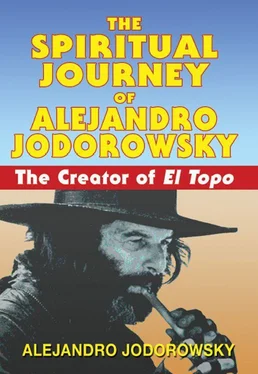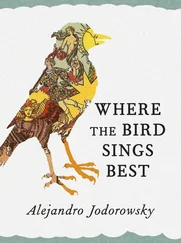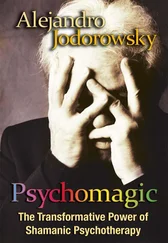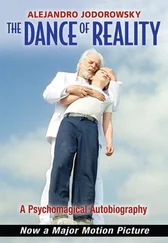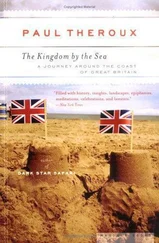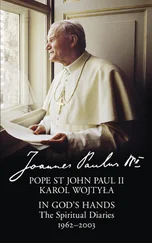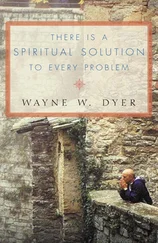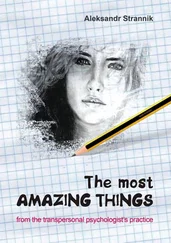Very soon, I returned to France without seeing him again.
Five years passed. This time, I returned to Mexico wearing the hat of a therapist promoting my new book. As usual, the publishers had arranged a lecture at the Julio Castillo Theater.
It had been two weeks since my son Teo died, and I was broken by this terrible loss. When the accident happened, I was in the midst of a flurry of obligations, courses, conferences, interviews, therapy sessions, and preparations for this trip to Mexico. Nothing made sense to me any more, but I forced myself to respect my obligations, knowing that if I abandoned them now, I would never take them up again. When I arrived in Mexico City, I felt as though a secret weight was pressing me down into the earth. I had to call upon all my experience as an actor to put on a good face before the eager audience of readers and students and somehow transmit my message of the joy of life — but in the middle of my presentation, it was as if a spring snapped inside my throat. I lost my voice. A desperate sob was down there, trying to open up a passage. I gritted my teeth and hid my face, pretending to use my handkerchief. I felt as though I could not continue.
At that exact instant, Ejo Takata came up onto the stage. He unfolded a Mexican version of a tatami mat and sat down to meditate. Instead of a kesa, he wore white linen pants and a simple shirt of the same material, like the Indians of the Sierra.
Here was my master, indeed — authentic as ever, solid as a mountain, his knees grounded in the earth and his head pushing against the heavens, at the very center of eternal time and space. His presence gave me the strength to continue. At the end, as on the last such occasion, he took advantage of the applause to disappear. I ran out, looking for him, but this time I could not find him at all. I needed his consolation, but I no longer had his address. I felt very sad. Jacqueline, a beautiful dwarf, came up to me and said, with great warmth: “I am a disciple of Ejo. He knows you need to see him. He told me to take you to where he is living, outside the city.”
After two hours in a beat-up old taxi, we arrived in a poor suburb where Takata lived like an Indian, teaching his Tarahumara disciples to meditate. Discreetly, Jacqueline waited for me in the old car. As I related at the beginning of this book, the master consoled me with a single word: duele , “it hurts.”
This was the last time I was ever to see him. I gave Jacqueline some money to buy flowers for his wife and adopted daughter.
“The wife and daughter could not bear the harshness of Ejo’s life between the city and the Sierra,” Jacqueline told me. “Tomiko married in the United States. She lives in Texas with her husband and three children. Michiko lives with them.”
Two years later, Jacqueline called me in Paris. In tears, she announced the death of Ejo Takata. I tried to console her. “Yes, Jacqueline, it hurts. It really hurts terribly — but life continues. When a branch is cut from the tree, it never comes back and the scar always remains on the trunk. The tree covers it over with new cells, and then new sprouts appear from it. The wound underneath the bark becomes a haven for mushrooms that fall from the tree and nourish the soil in which it grows.”
I received a fax from the Tarahumara disciple who now directed Ejo’s group and had taken the title of Roshi Silencio. He asked me for a thousand dollars to build a stupa, a Buddhist monument that would contain the master’s ashes and, later, those of his disciples. Instead of sending him a contribution for such a project, I sent a poem:
A pound of ashes,
a thousand pounds of ashes,
what is the difference?
The Master’s ashes
are my ashes.
When the wind carries away my remains,
the Master’s remains are dispersed with me.
A stupa does not give peace
when it is a stupa of death
seen without a master.
May his tomb
not be the tomb
of those who are afraid to traverse alone
the dissolution of their consciousness.
A Collection of Anecdotes

“I never surrendered, because the more you struggle, the more possibilities you have of winning and receiving help. It has always been in the last minutes, when everything seemed lost that someone came to help me go beyond my limits.”
SILVER KANE, DISPARA, DISPARA, DISPARA
(SHOOT, SHOOT, SHOOT)
Some readers may wonder what practical purpose koans serve. Granted, they express deep metaphysical questions — but what use are they in everyday life? Can a correct response to “What is the sound of one hand clapping?” ever help us find our place in contemporary society? I would answer yes. These seemingly insoluble enigmas that I spent countless hours struggling against and working with under Ejo Takata’s guidance have gradually forged my character. Years later, I was able to apply them to many occasions in life, especially when I was confronted with a crucial choice. Reality repeatedly put me in situations where I was faced with seemingly insoluble problems. I was forced to allow myself to be guided by some kind of incomprehensible intelligence so that I became like a famished hunter on the alert for game: a solution that would emerge suddenly from the depths of my being. There have been countless such occasions. Here are a few examples.
In 1967, in a Paris café, I met my friend Jorge Edwards. He was with Pablo Neruda, a genius poet, yet also a devoted worshipper of his own ego. Jorge later wrote this about our encounter in his book Adios, Poeta:
Once, in the Coupole Café in Montparnasse, around midnight, we were having a bite to eat and some wine. Sitting nearby was Alejandro Jodorowsky, one of the most interesting figures of my generation of Chileans. He had emigrated early and never returned. . I invited him to our table, and introduced him to Neruda.
“I’ve heard a lot about you,” Neruda said, with the best of intentions.
“And I’ve also heard a lot about you,” replied Alejandro.
This terse exchange was utterly cold. As you might expect, the conversation never got off the ground.
As Ejo Takata had told me: “If you meet a Buddha on the road, cut off his head.”
As I was finishing the shooting of El Topo and beginning the editing process, I discovered that an essential scene had a serious flaw: a yellow scratch ran through the image from top to bottom. Federico Landeros, the editor, exclaimed: “It’s a disaster — we can’t use this shot.” But I had neither the time nor the money to do it over. What could I do? Edit it out? Instead, I answered him: “If what I am saying in this scene is really important, no one will notice this scratch. Let’s pretend it doesn’t exist and keep the take.” Which we did.
Thirty years have passed, and no one has ever noticed this terrible flaw.
At the premiere of El Topo in England, I was summoned to the department of film censorship. It was a hypocritical office, and people were barely aware that it even existed. Some very polite bureaucrats informed me: “In this country, there are many depraved people. We cannot allow the scene where you wipe your bloody hands on the naked breasts of the actress. We need your authorization to cut it, and also your promise to keep this cut a secret. If you refuse, El Topo will not be shown in England.”
I wondered if I should I accept this mutilation, which violated all my principles. But then I exclaimed to myself: “The Venus de Milo had her arms cut off, but she is still a great work of art!” So I agreed, but only on condition that I be allowed to make the cut myself so that it would be properly done. This was granted, and they lent me a moviola editing machine.
Читать дальше
